The Best Breakfast Foods to Eat If You Have a High Risk of Heart Disease, Say Dietitians
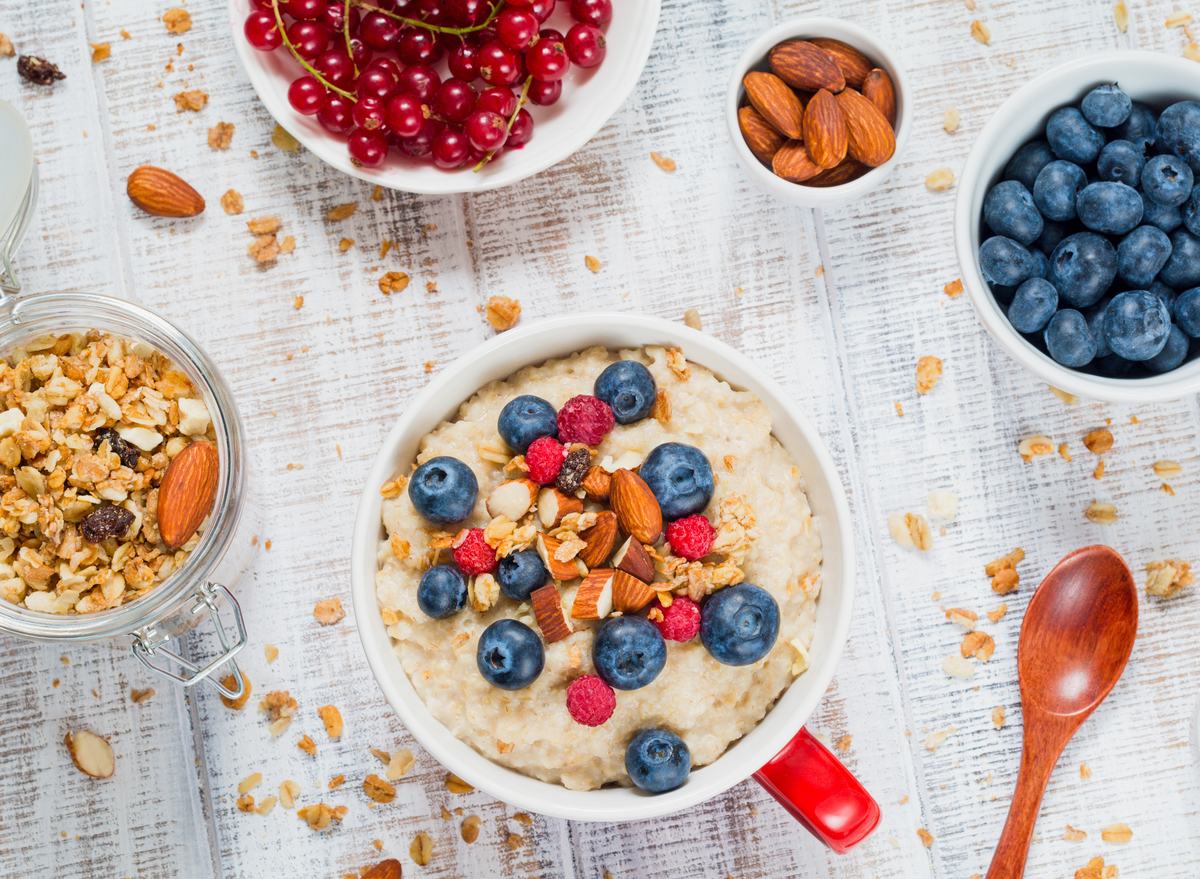
Heart disease should always be taken seriously, especially because many Americans are at risk. According to the CDC, over 47% of the U.S. population has at least one of the key risk factors for developing this type of disease, which include smoking, high blood pressure, and high blood sugar.
For those who are at a higher risk for heart disease, eating the right food can help tremendously. This is especially true for the most important meal of the day: breakfast!
“When it comes to breakfast, you have an opportunity to start a new day in a new direction for your health and wellbeing, because what you fuel your body with first thing in the morning typically sets the tone for the rest of your day in regard to the food and health choices you make,” says Trista Best, MPH, RD, LD at Balance One Supplements.
We had a few expert dietitians put together a list of the best breakfast foods to eat if you are at risk for heart disease. Keep these tips in mind, and for more healthy eating tips, make sure to check out The Best Foods That Can Help Lower Your Risk of Heart Disease.
Oatmeal
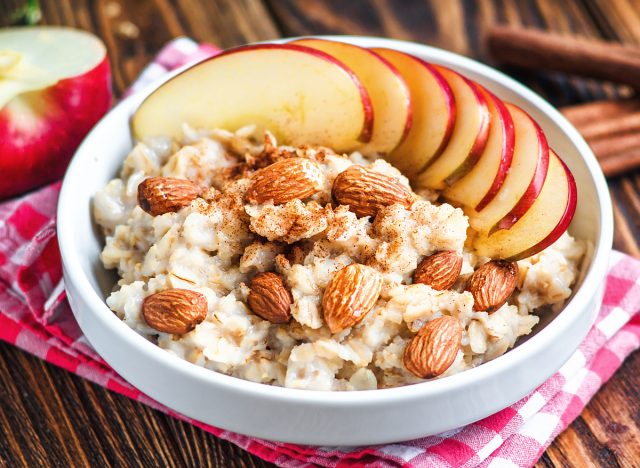
According to Best, oatmeal is one of the healthiest breakfasts you can choose because of its high fiber content and heart-healthy nutrients like vitamin B, zinc, and magnesium.
“Fiber helps reduce cholesterol by binding to it and removing it from the body,” says Best. “While also feeding the good bacteria in the gut, which can help keep other areas of health in line like weight, glucose, and inflammation that will exacerbate potential heart conditions.”
To make your oatmeal as healthy as possible, Best recommends using plain oats and adding healthy toppings like nuts or fruit.
Veggie omelet
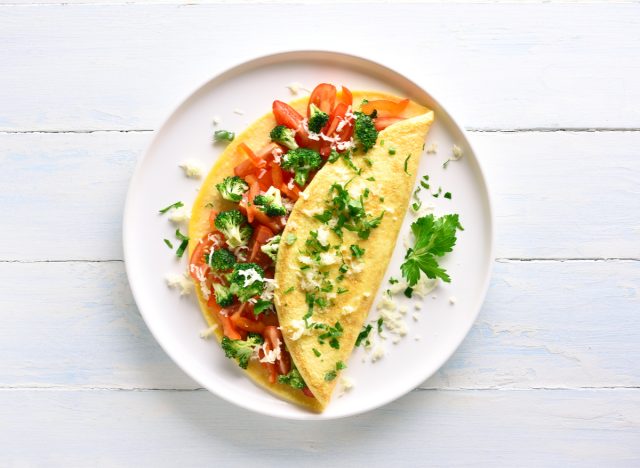
An omelet can be another great heart-protective way to start your day. Not only will you get some protein from the eggs, but you’ll get plenty of “fiber from vegetables like mushrooms, peppers, onions, and spinach,” says Best.
Opting out of bacon or sausage in your omelet is key for those at risk of heart disease. A study from the Harvard School of Public Health found that eating processed meats (bacon, sausage, or deli meat) was associated with a 42% higher risk of developing heart disease as well as a 19% increased risk of diabetes.
Try this Vegetarian Black Bean Omelet Recipe!
Whole-grain English muffin or bagel with eggs
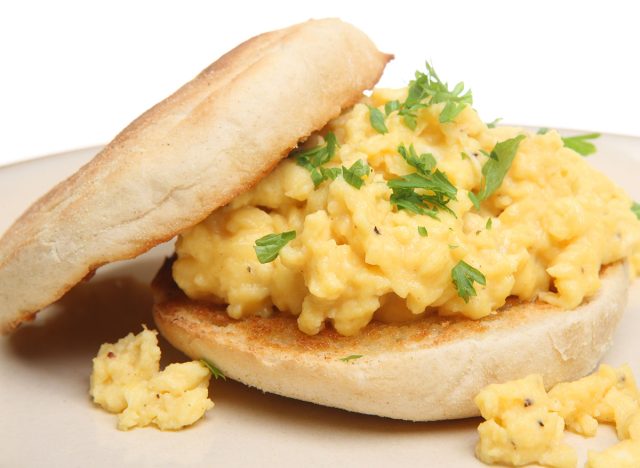
There’s a negative stigma with eating bread when you’re trying to be healthy, but whole grains can be a helpful part of a well-balanced breakfast.
“Whole grains are loaded with fiber, which helps reduce bad LDL cholesterol, so choosing a whole-grain English muffin or bagel instead of white bread for a breakfast will help fill you up for hours,” says Janet Coleman, RD with The Consumer Mag.
To round out your breakfast, you can make make a delicious egg sandwich for extra protein.
“Eggs contain omega-3 fatty acids, which lower your bad LDL cholesterol while raising your good HDL cholesterol, and eggs for breakfast can fill you up without making you overeat throughout the day,” says Coleman.
Berries
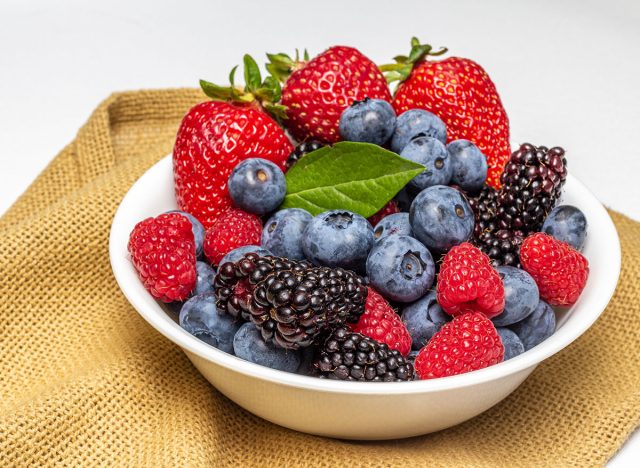
Berries are full of helpful heart-healthy antioxidants, which make them a great addition to your morning meal.
“The polyphenols in berries have shown to have a heart-protective effect, and the folate found in berries have been shown to reduce homocysteine levels, which can help lower heart disease risk,” says Morgyn Clair, MS, RDN, and author at Fit Healthy Momma. “Not to mention that iron (which is found in many berries) is needed for healthy blood flow and production, which is essential for heart health as well.”
For more breakfast tips, read these next:








